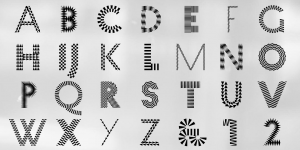Principles of good design are timeless. But as a graphic designer, you are always reaching for something more inventive and inspired.
Every day, we witness graphic design at work.
Logos, posters, publications, product packaging, advertisements, and more.
It’s a constantly in-demand industry. Why? Because companies require designers at all times, whether to build branding materials or design a flyer for a forthcoming event.
Graphic design is a form of visual communication that uses graphics, typography, colour, and illustration to convey a message.
Every graphic designer must adhere to specific guidelines:

- Hierarchy
- Alignment
- Contrast
- Space
- Colour
- Proximity
- Repetition
- Balance
Contrary to common assumptions, having an eye for design is an acquired talent, not a natural ability.
After gaining a general understanding of graphic design, it’s time to take a more in-depth course.
The history of graphic design, the different subgroups within the subject, the psychology behind design concepts, and the tools you’ll need will all be covered in a course.
It isn’t easy to conceive of graphic design without thinking of the used tools.
Adobe Illustrator, Adobe InDesign, Adobe Photoshop, and Sketch are all used extensively in graphic design work.
All of these programs can produce everything from logos and graphics to website designs.

Once you’ve decided to learn design, begin compiling a portfolio of work that you consider to be effective.
It might be as easy as saving photographs to a folder on your computer, creating a Pinterest board, or bookmarking images in your online browser.
Sifting through a collection of inspiring work may help you spot current and historical trends, as well as shape your particular style.
The way content is organized and ordered inside a layout is referred to as typography and it plays an essential part in graphic design.
Typefaces, point sizes, line spacing, letter spacing, and kerning are all examples of the type.
You’ll study the differences between a sans serif and a serif font, expand your understanding of typefaces, and discover which fonts go well together as you progress through design.
The graphic design track can be perfect for you if you have a creative eye and an endless curiosity about the world around you. By committing yourself to a practice of learning and applying the skills you learn daily, you’ll be well on your way to becoming a graphic designer.

CONCLUSION:
If you have a creative eye and an insatiable interest in the world around you, the graphic design route could be correct for you. You’ll be well on your way to becoming a graphic designer if you commit to a regular practice of learning and applying new abilities.
DGMC assists you in your graphic design journey and provides you with the opportunity to bring value to the placement process in today’s competitive environment.

